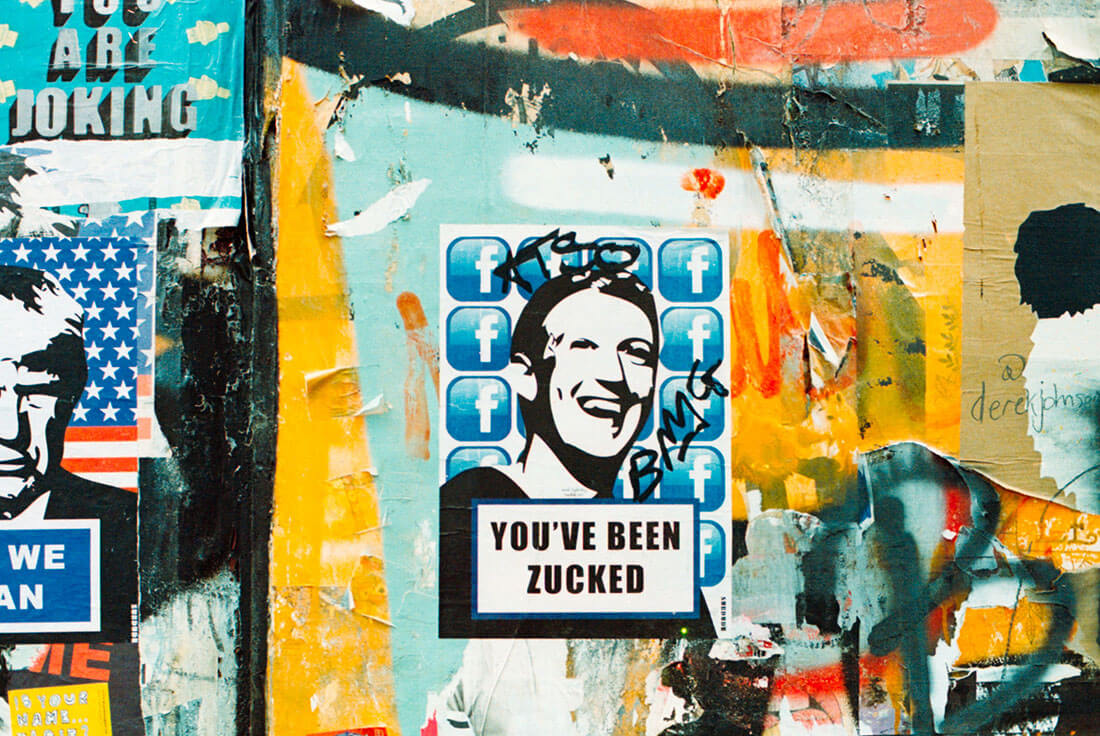The rise of the Not-so-Silent Media: How conversations shape around taboo topics
Undeniably, one of the most controversial media scandals of the 90s was Milind Soman’s nude photoshoot on the front page of a national newspaper. It also led to quite a court battle. And while the recent FIR against Ranveer Singh for posing in the nude for Paper magazine might make us feel like we’ve not come very far, the reality is slightly more nuanced.
Indian media consumers are not a very forgiving lot. Our underlying values, morals, and societal conditioning drive our thought process in a certain direction and anything in the public sphere that doesn’t align with them receives a severe backlash. However, the tides have slowly been changing. And while we still might not be a hundred percent comfortable seeing nude celebrities in our social media feeds, we’re certainly comfortable discussing taboo topics.
From the rise of sexual-health influencers like Leeza Mangaldas and Seema Anand to articles in mainstream publications talking about sensitive issues like racism and sexism to the rise in discussions around mental health, the Indian media landscape is slowly but surely changing for the better.
This can be attributed to several factors, including the increasing diversity of voices and perspectives in the media as well as the growing importance of social and political issues in society. Additionally, the rise of social media has made it easier for people to share their personal experiences and opinions on these topics, which has led to more open and nuanced discussions.
Wokeness and other reasons behind the rise of taboo conversations

Wokeness may often get a negative connotation, but in this context, it is the wokeness of the younger generation that can be attributed to this shift. Like everything else in the capitalistic world, media information also works in a cycle of supply and demand. And since the demand for more real conversations and nuanced storytelling has risen, it has also given rise to a similar supply of content.
The increasing use of social media is the next major catalyst. And when you combine that with woke citizens on the internet, it creates a more accepting and inclusive environment. Social media channels for many have become their primary source of worldly information. Most times, a major news story first becomes a trend on Twitter before being covered by news organizations. Such is the power of social media that it has made everyone who’s online on these platforms a source of information and an independent publisher. People from all walks of life have been given a platform to share their stories and experiences and they are using it to their advantage. This has led to more open and honest discussions on taboo topics and has helped to break down the barriers that once kept these topics hidden.
Another major catalyst has been the increasing diversity of voices and perspectives in the media. Of course, this directly correlates to the rise of more educated, aware citizens. Media channels and organizations have long been pushing for diversity and inclusiveness in their setup, as maintaining diversity inside the organization and providing inclusive content are nowadays crucial for the longevity of any media platform. It can not only enable a better representation of society but also build audience trust and even make media organizations more profitable.
And finally, we have a growing awareness of the social and political issues in our youth. The shift in the global political landscape, its impact on the Indian space and the current political climate have all contributed to more open and honest discussions. Take the recent protest in support of abortion rights in the United States or the ongoing Ukraine war. Earlier, these could’ve been isolated to a single part of the world, but awareness and social media have made these global issues and we can even see Indians taking part in these discussions.
Why are taboo conversations the need of the hour?

This rise of taboo topics in the mainstream and social media has been effective for a variety of reasons, including the surprise element, reliability, relatability, and the sense of urgency that these topics create. Discussions on sensitive issues that are usually considered too taboo to talk about openly, tend to capture the attention of people and generate a strong emotional response in them. This not only makes the digital content more memorable and impactful but also helps raise awareness about important social and political issues in society. We’ve seen this in the cases of women’s rights, Black Lives Matter, child marriage, and abortion, among others.
Another reason why this trend has been so effective in the last few years is that such topics and ideas tend to establish a sense of reliability and authenticity. When a topic that is not usually discussed in public is brought out in an open space, people tend to pay more attention to it as it might be something new or unknown to them. This is especially true for sensitive issues that have been stigmatized or ignored in the past. By addressing these issues, media channels have been able to demonstrate a commitment to authenticity and truth-telling, which has helped them build trust and loyalty with their audiences.
Moreover, people tend to easily relate to sensitive issues that they usually don’t discuss in public, as they may have gone through similar experiences themselves. That’s why bringing such topics out in the public domain helps to create a sense of connection and understanding between the audience and such content, making the underlying message more impactful. Take discussions about sexual health, for instance. It is still a topic that we might not discuss openly with our friends or family, but on social media, engaging with experts in the field gives us an opportunity to explore this space and understand ourselves better without the fear of judgment.
Such topics also tend to create a sense of urgency in people, which is why this trend has caught on so quickly in the mainstream media. By bringing attention to sensitive issues that have a real impact on people’s lives, the media has been able to draw attention towards the need to address and solve such issues. This has helped in mobilizing the audience and inspiring them to take action to make a positive change in society.
Role of taboo conversations in spreading social awareness

One way that this trend can be used to spread awareness is by increasing the representation of marginalized communities in the media. By giving a platform to individuals from diverse backgrounds, media platforms can help to break down stereotypes and educate the public about the experiences and perspectives of these communities. This can lead to greater understanding and acceptance of marginalized groups and can help combat discrimination and prejudice.
Another way that this trend can be used to spread awareness is through the effective coverage of sensitive issues such as mental health, sexuality, and race. By bringing attention to these topics, the media can help destigmatize them and educate the public about the importance of understanding and addressing them. This can enable greater access to resources and support for individuals who may be struggling with these issues and can also help in creating a more inclusive and supportive society.
Furthermore, the use of social media platforms is crucial for spreading awareness on such topics, as it allows individuals to share their own experiences and perspectives on sensitive issues. This can be especially powerful for marginalized communities, as it allows them to speak for themselves and control their narratives. It also enables people to form communities of support and share information and resources.
How brands can leverage taboo topics for marketing?

The trend of taboo topics becoming more prevalent in mainstream and social media can also be a great opportunity for brands to market their products. By addressing sensitive issues and aligning themselves with socially responsible causes, brands can connect with consumers on a deeper level and build trust and loyalty.
We’ve already seen this in India with brands like Zivame and Muse. While the former is an online lingerie and intimate apparel brand, the latter is an intimate wellness brand. Up until a few years ago, you couldn’t imagine seeing media coverage for these brands, but now they’re extensively covered both in mainstream media and on social media. Muse has gained a lot of traction for its creative advertising and sexual education content on social media.
Now, we have several other brands that address taboo topics by creating educational content around them. This is a genius strategy both from an advertising perspective as well as from an educational perspective. It also helps people become more trusting of the brand.
Another way that brands can capitalize on this trend is by aligning themselves with socially responsible causes. For example, a brand might create a campaign that supports a charity or non-profit organization that addresses a specific taboo topic, such as mental health. By doing this, the brand can demonstrate that it is committed to making a positive impact on society, which can help to build trust and loyalty with consumers.
Additionally, brands can also use this trend to create products or services that address taboo topics. For example, a brand might create a line of clothing designed specifically for plus-size individuals, or a brand might create a line of skincare products specifically designed for individuals with sensitive skin. By creating products or services that address taboo topics, brands can show that they understand and care about the specific needs of their consumers.
Concerns that arise out of this rising trend
![]()
Like with everything in life, there are both upsides and downsides to any new development. And the same goes for this trend. The rise of taboo topics in mainstream and social media has brought about many positive changes in the way society discusses and addresses sensitive issues, but not without its set of challenges.
For one, as taboo topics become more mainstream, there is a risk of oversaturation and desensitization in people’s minds. This can set a dangerous precedent in the younger population as it can lead to emotional numbing and a loss of inhibitions regarding such sensitive topics. Instead of becoming more caring and understanding, which is required to deal with such issues, overexposure can instead induce a careless attitude in people. Another challenge with this trend is the lack of nuance in discussions of taboo topics. Social media, in particular, is known for its tendency to reduce complex issues to sound bites and hashtags. This can make it difficult for people to fully understand and engage with the complexities of such matters.
Additionally, the rise of taboo topics in mainstream media can also lead to a lack of representation of certain perspectives. For example, marginalized communities may find themselves misrepresented or ignored in mainstream discussions of sensitive issues. This can lead to further marginalization and a lack of understanding of these communities’ experiences and perspectives.
To address these challenges, our society needs to continue to approach taboo topics with care and sensitivity. Media outlets need to make an effort to include a diverse range of voices and perspectives in their discussions of sensitive issues. Furthermore, individuals should also strive to approach these topics with an open mind and a willingness to learn from different perspectives.



